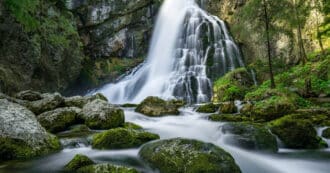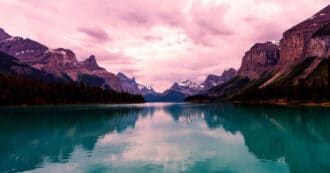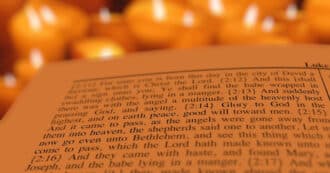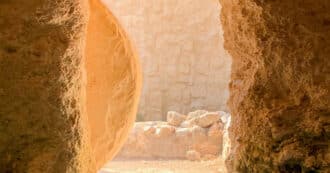The Rev. Dr. Leah D. Schade; leahschade@gmail.com
Here are ideas for reading and preaching Psalm 1, Jeremiah 17:5-10, and Luke 6:17-26, assigned for Feb. 13th, 2022, the sixth Sunday after Epiphany in the Revised Common Lectionary. This is part of the EcoPreacher 1-2-3 series to equip pastors and congregations for engaging the Bible through an ecological lens.
Create an ecosystem of faith! Both the psalmist and Jeremiah urge us to root ourselves near the flowing waters of God’s word.
Psalm 1:3
They are like trees planted by streams of water,
which yield their fruit in its season, and their leaves do not wither.
In all that they do, they prosper.
Jeremiah 17:8
They shall be like a tree planted by water, sending out its roots by the stream.
It shall not fear when heat comes, and its leaves shall stay green;
in the year of drought it is not anxious, and it does not cease to bear fruit.
Eco-Exegesis
Eco-exegesis is a method of interpreting the biblical text through a green lens using the principles of ecological theology. For this passage, we turn to Deep Calls to Deep: The Psalms in Dialogue Amid Disruption by William P. Brown (Nashville, TN: Abingdon Press, 2021).
William Brown, Professor of Old Testament at Columbia Theological Seminary, notes that a relationship with Torah (Scripture) is not just a matter of obedience and learning, but also “delight” and “deliberation” – descriptors unique to this psalm. We are drawn to God’s word just as we are drawn to beautiful trees by a flowing stream. But more than that, Psalm 1 imagines those who deliberate on God’s word as trees themselves! The psalmist implies that God is the gardener, planting the trees by flowing waters, conveying a sense of “flourishing, rootedness, and productivity” (186). “To ‘delight’ in Torah is to drink from its waters. To ‘deliberate’ on Torah is to sink one’s roots beside its nourishing streams,” Brown explains (187).
Both Psalm 1 and Jeremiah 17:7-8 (the other reading from the Hebrew Scriptures for this Sunday) draw contrasts between the living things in nature that are sustained over time and those that are short-lived or not as substantive. Psalm 1 advises the faithful to be like the tree, not the “chaff” that the wind scatters. In Jeremiah, those who “trust in mere mortals and make mere flesh their strength, whose hearts turn away from the Lord” are compared to a “shrub in the desert” deprived of water and healthy soil. For Jeremiah, “The one who trusts in [God] is given elevated botanical status,” just like in Psalm 1 where the righteous person is compared to a tree (183). In this way, engaging Scripture itself creates what we might call an “ecosystem of faith” – a place that is well-watered with loamy, lively soil sustaining a tree that can live for decades and beyond.
Just as both the psalmist and Jeremiah contrast those who are blessed and cursed, so does Jesus in Luke 6:13-26. But he does something very interesting – he pulls the teaching inside-out. He states that it’s the poor and the hungry and the hated who are blessed, while the rich, sated, and puffed up are not. This teaching does not negate Psalm 1 or Jeremiah. Rather, it corrects a misunderstanding and misapplication of the idea of blessedness, that those who have been made poor and hungry by the rich are deserving of their fate. No, says Jesus, this is not the case. As Psalm 1 shows us, God takes the shriveled shrub and transplants it so that it has access to the same water as the trees. In other words, the state of inequality is not divinely ordered. Rather, ensuring equity for all is what God desires.
We can draw implications for our current environmental inequities, especially when it comes to those who are relegated to live in concrete wildernesses devoid of trees, flowing water, and the healing aspects of nature. Studies have shown that when local governments plant trees and create parks – especially in neighborhoods that had previously been neglected by urban infrastructure – property values go up, pollution goes down, heating and air conditioning costs are lowered, and the quality of life for the residents improves.
This being the case, congregations can think about how to advocate for urban forests, protect natural lands, and plant trees as part of their faith practices. As we do this work, we are enabling more people to root themselves in God’s Creation and draw sustenance for their spirits as well as their communities. Together, we can create an “ecosystem of faith” that nurtures, sustains, and beautifies.
1. Eco-Idea
The Eco-Idea is one succinct statement that tells us who God is and/or what God does in relation to Creation and how we should respond as people of faith.
Just as God desires humanity to be nourished and sustained by both Scripture and Creation, faith communities can help to ensure that more people are “planted” in healthy, verdant, and tree-filled places.
2. Eco-Questions
Eco-Questions are what we can ask to help a congregation draw out the implications of the Eco-Exegesis and Eco-Idea.
- Where are the “tree deserts” in your community? Could your congregation start a “tree ministry” or “tree task force” to research how to be advocates for urban forests (if your congregation is located in a city) or to protect and preserve existing woodlands?
- Some wooded areas become dumping grounds for people’s unwanted trash and household items. Could your congregation organize a forest clean-up day to pick up and haul out the waste, restoring its beauty as God intended?
3. Eco-Actions
Eco-Actions are ways that a congregation might respond to the Eco-Idea and Eco-Questions. One of these possibilities may have salience for your ministry context.
- Invite an arborist to teach your congregation how to plant and care for trees, then choose native trees to plant on the church property and in the community. Learn the proper way to mulch a tree. For example, avoid “mulch volcanoes” – piling up mulch around the bark transmits pathogens to the tree. Instead, spread it evenly around the base of the tree. Also, put a “name tag” on the tree so that people passing by can learn its name.
- Organize youth and adult volunteers to visit residents at a local retirement home and take them outside to enjoy nature. Ask the resident how their family related to the land. Where in nature did they play as a child? What are their memories of the trees, gardens, animals, and people growing up? Consider video-documenting their stories to create a “living garden” of memories to share with the congregation.
- Make a plan for your garden, either at your home or church. Even if it’s just some pots on the porch or windowsill, think about what vegetables and flower you would like to grow this season and determine when you’ll plant them. If your church has enough land, consider starting a community garden and offering plots to people who live in apartments or don’t have yards big enough for their own. Ask people to donate their extra produce to the local food bank.
* Featured image source





